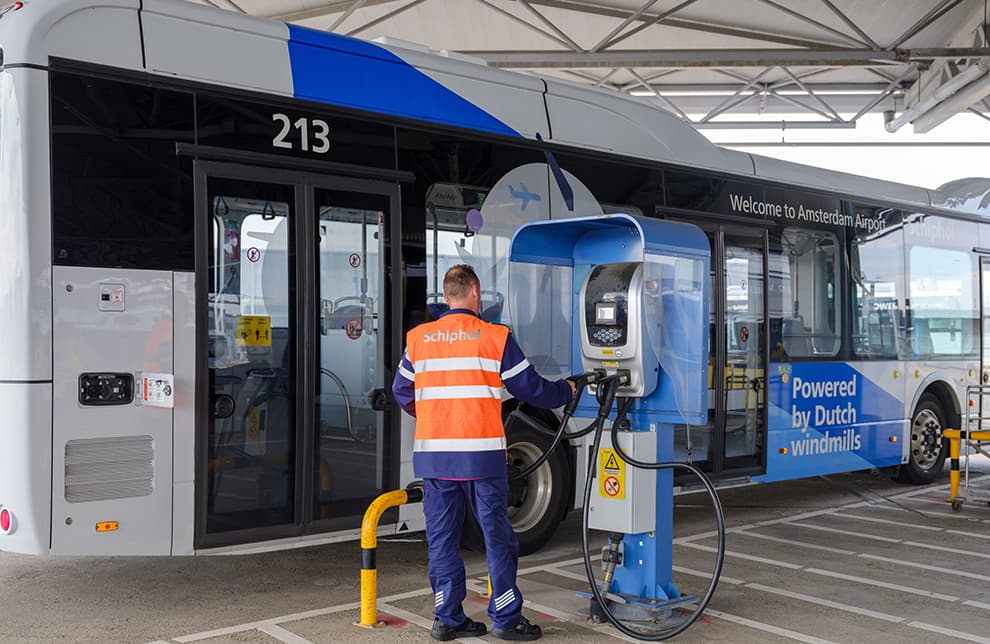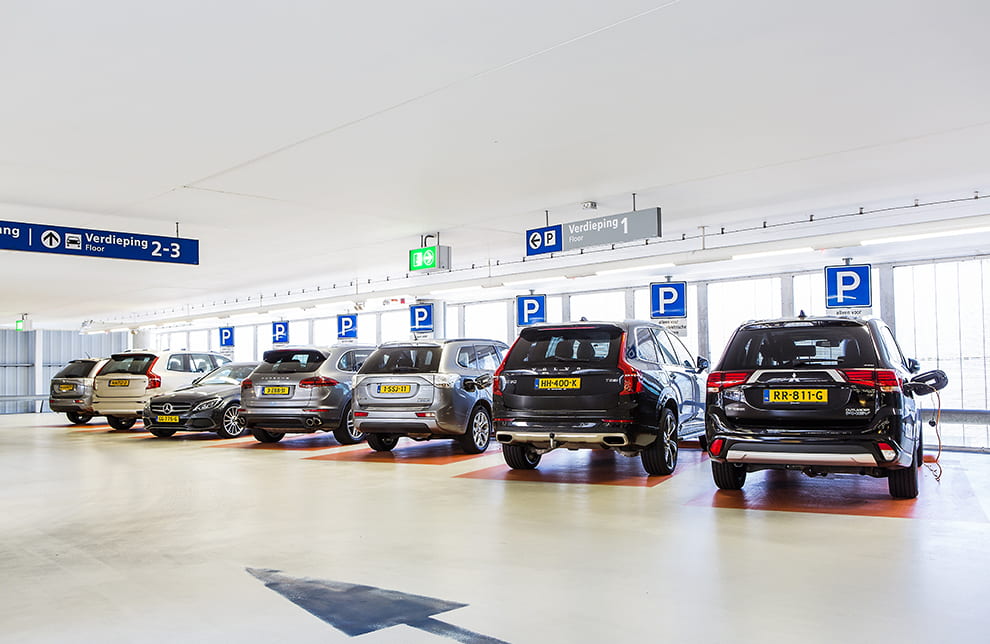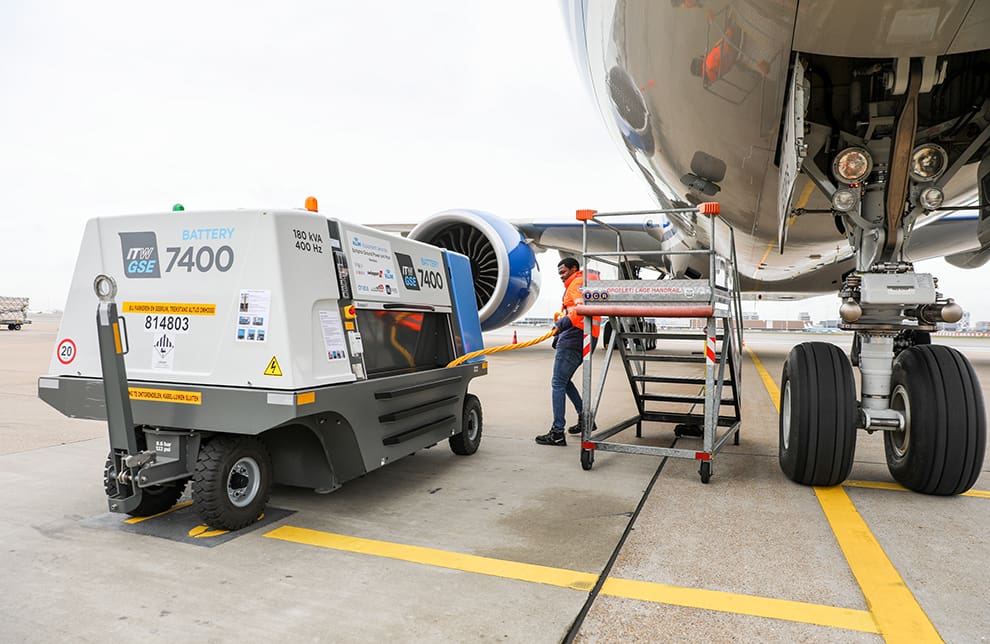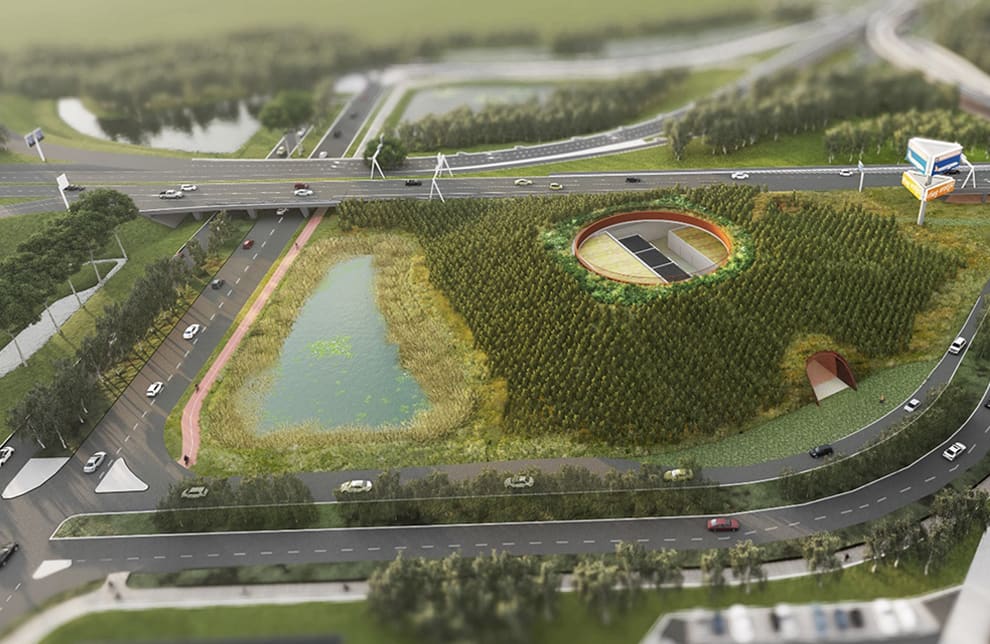More charging points help us become emission free
A fully emission-free Schiphol by 2030. A big ambition, but one we are confident in achieving. And electrification will play a large part in that. That's why we are going to install up to 10,000 charging points at our airports over the coming years. We're very pleased to be able to tell you more about this.

At Schiphol, we see ourselves as drivers of innovation and we dare to explore new paths. That's necessary too, because in order to be an emission-free airport by 2030, we need to lead the way more than ever. That includes replacing all fossil fuel-powered vehicles and machines at our airport with ones that are powered by electricity.
A movement
A shift, a different way of thinking, is needed to achieve that. At Schiphol, we want to start a movement to encourage electrification. But we can only do that if we have the right infrastructure to support it. After all, those new and clean hotel shuttles, taxis, catering trucks, pushback vehicles, ground power units and buses need a place to recharge.
And so, over the coming years, we'll be installing up to 10,000 charging points. A large part of them at Schiphol, but the other Royal Schiphol Group airports are also transitioning to electric energy.


Charge anytime and anywhere
There are currently around 750 charging points at Schiphol, 450 of which are our own. 300 additional charging points are set to be installed this year. We will continue to increase supply of slow (AC) and fast (DC) chargers, both airside and landside, over the coming years. This is an example of how we are leading the way when it comes to encouraging the transition to electric energy. The key to this is standardisation. We are ensuring that drivers of all different kinds of RDW-certified electric vehicles (EVs) can charge anytime and anywhere at the airport.
Control over our consumption
Installing lots of charging points is not enough. By looking differently at how and when we use our electricity - increasingly generated by ourselves using solar panels - we gain control over our energy consumption. That is why we are simultaneously investing in a smart digital platform that centrally monitors and controls all our charging facilities.
This intelligent software allows us to use the charging capacity in the most efficient manner. For example, by spreading the charging over the day. That way, we stabilise our energy consumption and make optimal use of our sustainable energy without compromising on comfort or ease of use.
Emission-free future
In short, we are working hard towards an emission-free future for our airport.
Read the previous blogs
-
Special high-voltage substation
Published on:New high-voltage substation contributes to one of Schiphol’s most significant sustainability goals: zero emissions in 2030.

-
More electric equipment
Published on:Most diesel generators have now been replaced by electric ones. Schiphol provides almost all planes parked at the gate with electrical power.

-
Start construction circular checkpoint
Published on:For the new checkpoint we are using material left over after the demolition of three office buildings and three cargo buildings at Schiphol.
